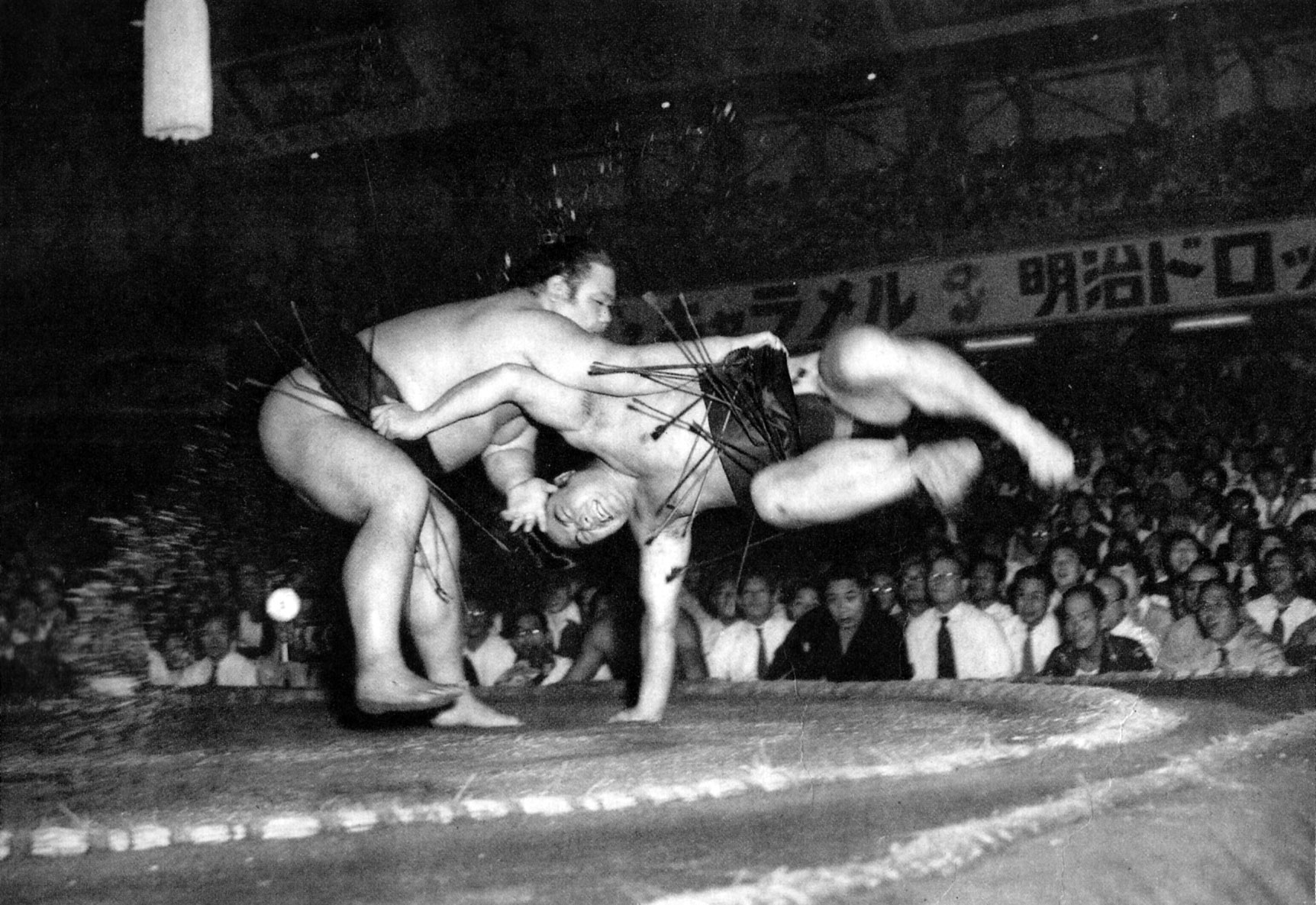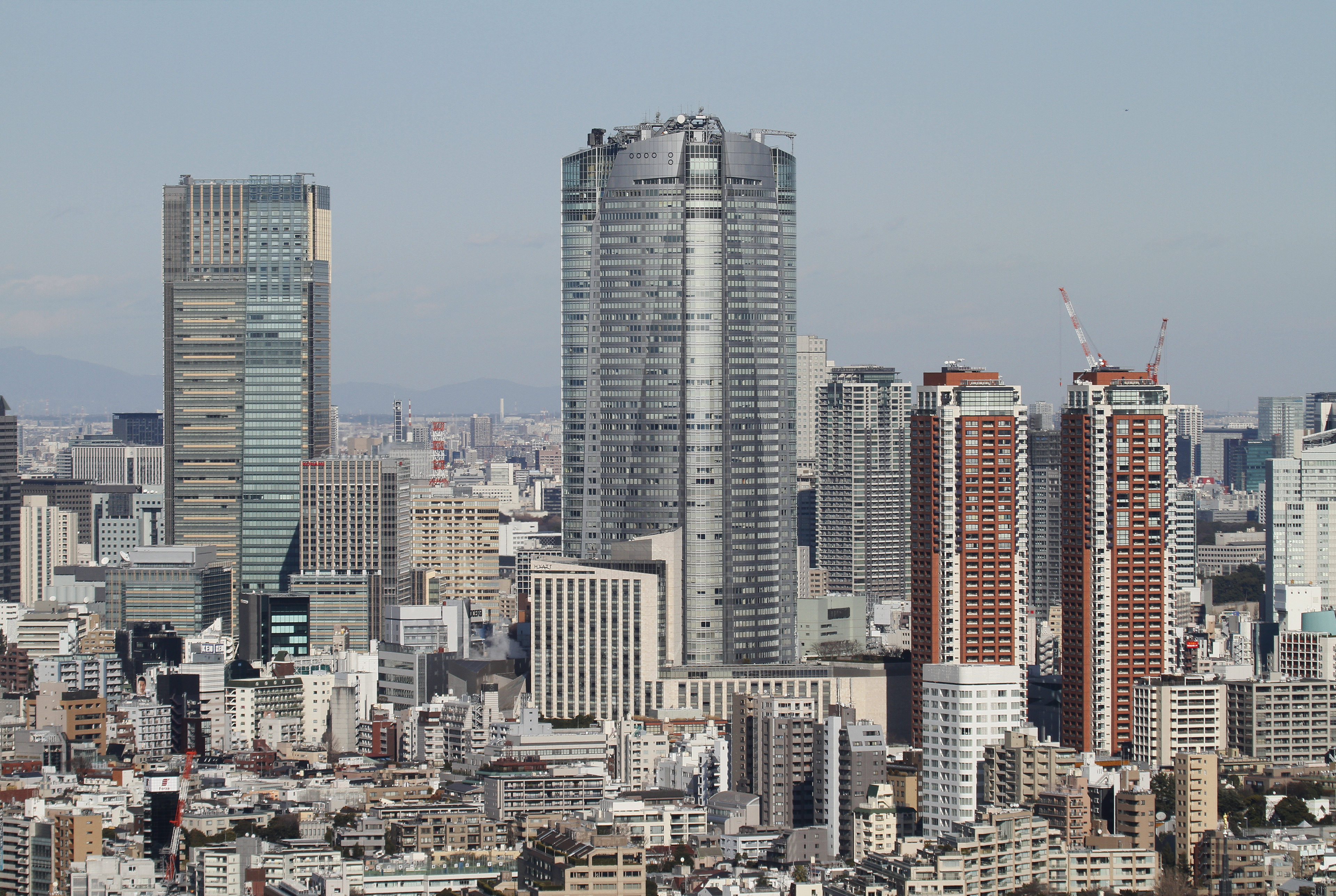|
Yamato Gō
Yamato Gō (born 17 December 1969 as George Kalima) is a former sumo wrestler from Oahu, Hawaii, United States. His highest rank was ''maegashira'' 12. Career He was a schoolfriend of future ''yokozuna'' Akebono. He made his professional debut in November 1990, joining Magaki stable. Yamato reached the salaried ''sekitori'' ranks in March 1995 when he was promoted to the ''jūryō'' division. He reached the top ''makuuchi'' division in January 1997, the first wrestler from his stable to do so since it was re-established in 1983. He chalked up a winning record of 8–7 in his debut and was ranked there for seven tournaments. He was forced to sit out the March 1998 tournament with a life-threatening bout of pneumonia which sent him down to ''jūryō''. Still not fully recovered in May, he turned in a disastrous 1–14 record and fell to the unsalaried ''makushita'' division. Just before the July tournament he was hit by a car and was forced to withdraw once again. This sent him ... [...More Info...] [...Related Items...] OR: [Wikipedia] [Google] [Baidu] |
Makushita
Professional sumo as administered by the Japan Sumo Association is divided into six ranked divisions. Wrestlers are promoted and demoted within and between these divisions based on the merit of their win–loss records in official tournaments. For more information see ''kachi-koshi'' and ''make-koshi''. Wrestlers are also ranked within each division. The higher a wrestler's rank within a division is, the stronger the general level of opponents he will have to face becomes. According to tradition, each rank is further subdivided into East and West, with East being slightly more prestigious, and ranked slightly higher than its West counterpart. The divisions, ranked in order of hierarchy from highest to lowest, are as follows: ''Makuuchi'' , or , is the top division. It is fixed at 42 wrestlers who are ranked according to their performance in previous tournaments. At the top of the division are the "titleholders", or "champions" called the ''san'yaku'' comprising ''yokozuna'', ... [...More Info...] [...Related Items...] OR: [Wikipedia] [Google] [Baidu] |
Living People
Related categories * :Year of birth missing (living people) / :Year of birth unknown * :Date of birth missing (living people) / :Date of birth unknown * :Place of birth missing (living people) / :Place of birth unknown * :Year of death missing / :Year of death unknown * :Date of death missing / :Date of death unknown * :Place of death missing / :Place of death unknown * :Missing middle or first names See also * :Dead people * :Template:L, which generates this category or death years, and birth year and sort keys. : {{DEFAULTSORT:Living people 21st-century people People by status ... [...More Info...] [...Related Items...] OR: [Wikipedia] [Google] [Baidu] |
1969 Births
This year is notable for Apollo 11's first landing on the moon. Events January * January 4 – The Government of Spain hands over Ifni to Morocco. * January 5 **Ariana Afghan Airlines Flight 701 crashes into a house on its approach to London's Gatwick Airport, killing 50 of the 62 people on board and two of the home's occupants. * January 14 – An explosion aboard the aircraft carrier USS Enterprise (CVN-65), USS ''Enterprise'' near Hawaii kills 27 and injures 314. * January 19 – End of the siege of the University of Tokyo, marking the beginning of the end for the 1968–69 Japanese university protests. * January 20 – Richard Nixon is First inauguration of Richard Nixon, sworn in as the 37th President of the United States. * January 22 – Attempted assassination of Leonid Brezhnev, An assassination attempt is carried out on Soviet leader Leonid Brezhnev by deserter Viktor Ilyin. One person is killed, several are injured. Leonid Brezhnev, Brezhnev es ... [...More Info...] [...Related Items...] OR: [Wikipedia] [Google] [Baidu] |
List Of Past Sumo Wrestlers
This is a list of prominent past wrestlers (either retired or deceased) in the sport of professional sumo. They are listed in order of the year and tournament month that they made their professional debuts. The information listed below was gleaned from the wrestlers' individual articles; refer to their links for more details. List :{, class="sortable wikitable" style="font-size: 100%" , - !Shikona, Ring name !Entered !Retired !width="80" , Highest rank !Stable !class="unsortable", Career and other notes , - , Akashi Shiganosuke , 1624? , 1643? , Yokozuna , N.A. , ''yokozuna status conferred centuries later, historical existence disputed'' , - , Ayagawa Gorōji , 1715? , 1745? , Yokozuna , N.A. , ''yokozuna status historically conferred, actual yokozuna license never proven'' , - , Maruyama Gondazaemon , 1735? , 1749-11 , Yokozuna , Nanatsumori , ''yokozuna status historically conferred, died while an active wrestler'' , - , Miyagino Nishikinosuke , 1766-10 , 1796-3 , Sekiwake , S ... [...More Info...] [...Related Items...] OR: [Wikipedia] [Google] [Baidu] |
List Of Non-Japanese Sumo Wrestlers
This is a list of foreign-born professional sumo wrestlers by country and/or ethnicity of origin, along with original name, years active in sumo wrestling, and highest rank attained. Names in bold indicate a still-active wrestler. There are 186 wrestlers who have listed a foreign country as their place of birth on the ''banzuke'' or official ranking sheets. The first foreign born wrestler to reach the top ''makuuchi'' division was the Hawaiian born Takamiyama in January 1968, who was also the first to win a top division tournament championship or ''yūshō'' in 1972. He was followed by fellow Hawaiians Konishiki who was the first foreigner to reach the second highest '' ōzeki'' rank in 1987, and American Akebono who became the first foreign ''yokozuna,'' the highest rank, in 1993. In 1992, following the entry of six Mongolians to Ōshima stable, there was an unofficial ban (called ''enryo'' or "restraint") instigated by the Japan Sumo Association's head Dewanoumi on any more fo ... [...More Info...] [...Related Items...] OR: [Wikipedia] [Google] [Baidu] |
Glossary Of Sumo Terms
The following words are terms used in sumo wrestling in Japan. A B C D E F G H I J K M N O R S T W Y Z References External links Glossary of Sumo TermsSumopediaat NHK World-Japan {{Glossaries of sports Sumo is a form of competitive full-contact wrestling where a ''rikishi'' ( ... [...More Info...] [...Related Items...] OR: [Wikipedia] [Google] [Baidu] |
Kimarite
''Kimarite'' ( ja, 決まり手) is the technique used in sumo by a ''rikishi'' (wrestler) to win a match. It is officially decided or announced by the ''gyōji'' (referee) at the end of the match, though judges can modify this decision. The records of ''kimarite'' are then kept for statistical purposes. The Japan Sumo Association (JSA) have officially recognized 82 such techniques since 2001, with five also recognized as winning non-techniques. However, only about a dozen of these are frequently and regularly used by ''rikishi''. A sumo match can still be won even without a ''kimarite'', by the virtue of disqualification due to a ''kinjite'' (foul), such as striking with closed fist. Basic The basic techniques ( ja, 基本技, kihonwaza) are some of the most common winning techniques in sumo, with the exception of ''abisetaoshi''. ''Abisetaoshi'' is a rarely used basic ''kimarite'' that pushes down the opponent into the ground back-first by leaning forward while grappl ... [...More Info...] [...Related Items...] OR: [Wikipedia] [Google] [Baidu] |
Mawashi
In sumo, a is the loincloth that (sumo wrestlers) wear during training or in competition. Upper ranked professional wrestlers wear a as part of the ring entry ceremony or . For top ranked professional , it is made of silk and comes in a variety of colours. It is approximately in length when unwrapped, about wide and weighs about . It is wrapped several times around the and fastened in the back by a large knot. A series of stiffened silk fronds of matching colour called are inserted into the front of the . Their number varies from 13 to 25, and is always an odd number. They mark out the only part of the that it is illegal to grab on to: the vertical part covering the 's groin, and if they fall out during competition the (referee) will throw them from the ring at the first opportunity. Sometimes a may wear his in such a way as to give him some advantage over his opponent. He may wear it loosely to make it more difficult to be thrown, or he may wrap it tightly and spl ... [...More Info...] [...Related Items...] OR: [Wikipedia] [Google] [Baidu] |
Roppongi
is a district of Minato, Tokyo, Japan, famous for the affluent Roppongi Hills development area and popular night club scene. A few foreign embassies are located near Roppongi, and the night life is popular with locals and foreigners alike. It is in the central part of Tokyo, south of Akasaka and north of Azabu. History The name ''Roppongi'', which appears to have been coined around 1660, literally means "six trees". Six very old and large zelkova trees used to mark the area; the first three were cleared, and the last were destroyed during World War II. Another legend has it that the name comes from the fact that six ''daimyōs'' lived nearby during the Edo period, each with the kanji character for "tree" or a kind of tree in their names. Roppongi was not extensively populated until after the Meiji Restoration, although the area was trafficked for centuries and served as the site of the cremation of Shōgun Tokugawa Hidetada's wife in 1626.Gary CooperGood ol' six trees—the way ... [...More Info...] [...Related Items...] OR: [Wikipedia] [Google] [Baidu] |
Tokyo
Tokyo (; ja, 東京, , ), officially the Tokyo Metropolis ( ja, 東京都, label=none, ), is the capital and largest city of Japan. Formerly known as Edo, its metropolitan area () is the most populous in the world, with an estimated 37.468 million residents ; the city proper has a population of 13.99 million people. Located at the head of Tokyo Bay, the prefecture forms part of the Kantō region on the central coast of Honshu, Japan's largest island. Tokyo serves as Japan's economic center and is the seat of both the Japanese government and the Emperor of Japan. Originally a fishing village named Edo, the city became politically prominent in 1603, when it became the seat of the Tokugawa shogunate. By the mid-18th century, Edo was one of the most populous cities in the world with a population of over one million people. Following the Meiji Restoration of 1868, the imperial capital in Kyoto was moved to Edo, which was renamed "Tokyo" (). Tokyo was devastate ... [...More Info...] [...Related Items...] OR: [Wikipedia] [Google] [Baidu] |
.jpg)




